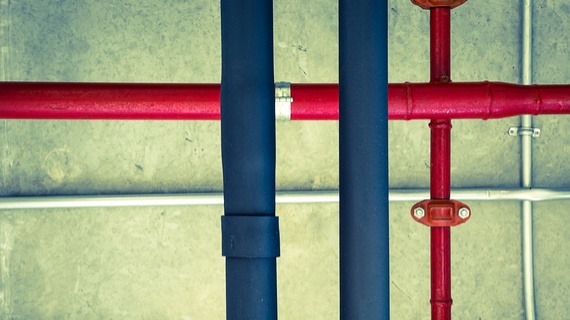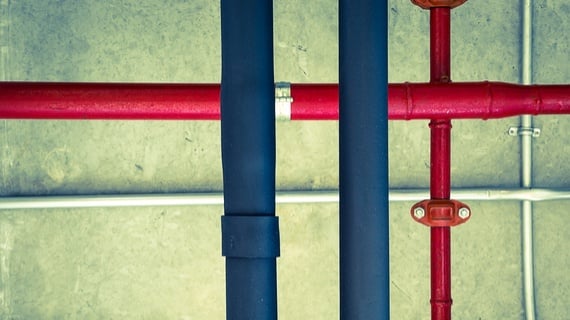
Dead legs are a common feature of any water system and may be present without being visible.
What is a dead leg?
A dead leg is a length of pipe leading to an outlet which has been removed or is rarely used or unused entirely. These sections of process piping therefore become isolated and no longer maintain a regular flow of water. Dead legs are often formed in both industrial and domestic process piping as processes are changed or modified. For example if you remove a sink and cap off the piping that once led to the appliance, instead of removing the piping at the source, this would create an area for water to stagnate.
What dangers do they pose?
Redundant pipework is considered to be a persistent and often critical source of risk within water systems. Because water is no longer flowing and circulating through the pipe this poses major risk in terms of contamination as water can be left standing in the dead leg to stagnate. Water that is allowed to stand unused also creates conditions which encourage the growth of Legionella; a bacterium which if inhaled can be extremely harmful.
According to WRAS guidelines, the length of a dead leg should now be limited to one and a half of the pipe’s diameter in an attempt to decrease the risk of bacterial growth. Any dead legs in place that exceed these guidelines pose an even greater risk of stagnation and contamination.
How to identify and remove them from your system
Brodex engineers are specially trained in identifying areas of risk within a water system, including pipework no longer in use. A legionella risk assessment will identify these areas of risk and outline any remedial actions to be taken. Where it is possible, dead legs should be removed from the water system completely to eliminate all potential hazards.
In the event that this pipework cannot be removed from the system, our specialist engineers will terminate the pipe so that it is as close to the main as possible and fit drains from the area in order to reduce risk. Where redundant pipes remain, regular risk assessment reviews should be carried out in order to maintain these areas and prevent any danger that may arise.
Unsure if you have any dead legs on site? Book a legionella risk assessment for a full survey of your water system which will highlight all potential risk areas.






